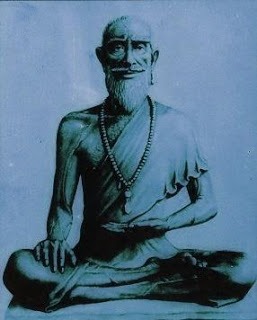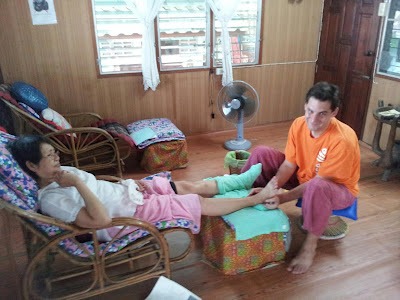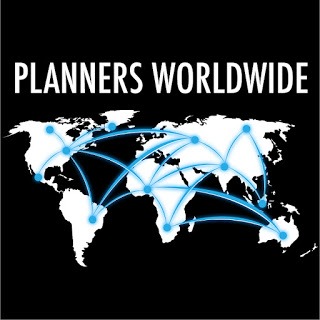I’ve just completed two massage courses in the past couple of weeks and now have my certifications! It is the first time I have a certification awarded by the Thai Ministry of Education. It’s good to learn new stuff and this is the kind of practical training I probably enjoy the most. It was great timing as well given ti is low season here and at most were about three students for four teachers or more at any time, I can certainly recommend The School of Massage for Health here in Chiang Mai if ever you’re interested in learning. It’s not a big school or a factory like some of the others which I enjoyed as well. Given we were few students we really had a a lot of time with the teachers to learn ask questions and practice a lot.
I passed the Foundation Traditional Thai Massage course with an A. Being in Chiang Mai, I learned the local Northern style Thai massage, which is supposedly a little more relaxed than the Southern Wat Pho Bangkok style, though I have read a few things online about it and the differences sound minimal. Given my teachers also told me the Northern style is different but not that much (Same same but different, as it were) it might simply be a North vs. South thing going on in the country. I was talking to a friend yesterday who surprised me by saying he’d had conversations with people who had visited Thailand several times and had no idea there was such a thing as traditional Thai massage, they firmly believed anything massage related was only to do with prostitution or happy endings. Obviously while those things exist for sure, my courses had nothing to do with it, and Thailand has a big traditions in massage that are a part of their traditional medicine.
Given we were praying to the guy every morning, I looked it up, and the person considered the founder and spiritual leader of traditional Thai massage is Shivago Komarpaj, whom according to Buddhist tradition was the Buddha’s personal physician over 2,500 years ago. The basics for traditional Thai massage involves a lot of yoga-like stretching and pressure points based on the Sen lines in the Human body. The Sen lines are a Thai traditional medicine thing, maybe based on though different from the Chinese traditional medicine meridian lines. Beyond the Buddhist tradition, Wikipedia tells me the current forms of Thai massage are most probably a blend of influences from India, China, and other parts of Southeast Asia that were more or less put together around the 19th Century.
 |
| Doctor Father founder of Thai Massage, Shivago Komarpaj. Nice beard. |
In the first course I learned many different points and lines to manipulate with the person laying on their back, massaging feet, legs, chest, stomach, arms, shoulders, neck, and head. With everything covered I can perform a massage over two hours long – probably close to three in total. A fair warning: if ever you ask for a massage over an hour long, there’s a good chance you’ll be in for some of the more adventurous stretching positions so be ready. And that’s not even involving the more advanced levels with the more extreme lying on your stomach positions (and someone sticking their knees and elbow in your back while stretching your arms in weird positions). It’s all for good health, and it’s also worth knowing that it is supposed to stretch but not to hurt – unless you enjoy that kind of thing – so if you have a traditional Thai massage, they should ask you how you prefer the pressure, and if it hurts it’s not right so don’t hesitate telling them.
I enjoyed the first course, had time for another and chose foot reflexology massage which definitely holds its own origins in Chinese traditional medicine rather than a purely Thai heritage. Who doesn’t like a foot massage, and it’s fairly easy to do, not needing a big mat or a table or anything. I really enjoyed this, and it’s pretty interesting to learn all the reflex points and areas for both feet and hands. So I’m trained to perform a foot massage that can easily last up to 90 minutes, and can even add up to 30-45 minutes on a hands massage. I was mainly tought by Teacher Pattana who has 20 years experience in teaching Thai massage so she knows her stuff – the other teachers stepped in for occasional practicing on someone else, and they would all give me different tips and pointers which is great. Everyone develops their own style of massage once the basics of all the positions mastered. On the reflexology side, I have charts with all all the areas and more specifically learned about 26 points for each foot, areas to massage the feet in certain ways for various ailments. I have no idea if it works and it’s not supposed to replace seeing a doctor if you need one, but it’s all very interesting in any case. I passed the test with an A+ and all the teachers told me I was really good, I just need some more practice now so I’ll be giving some massage to friends in Hong Kong!
 |



